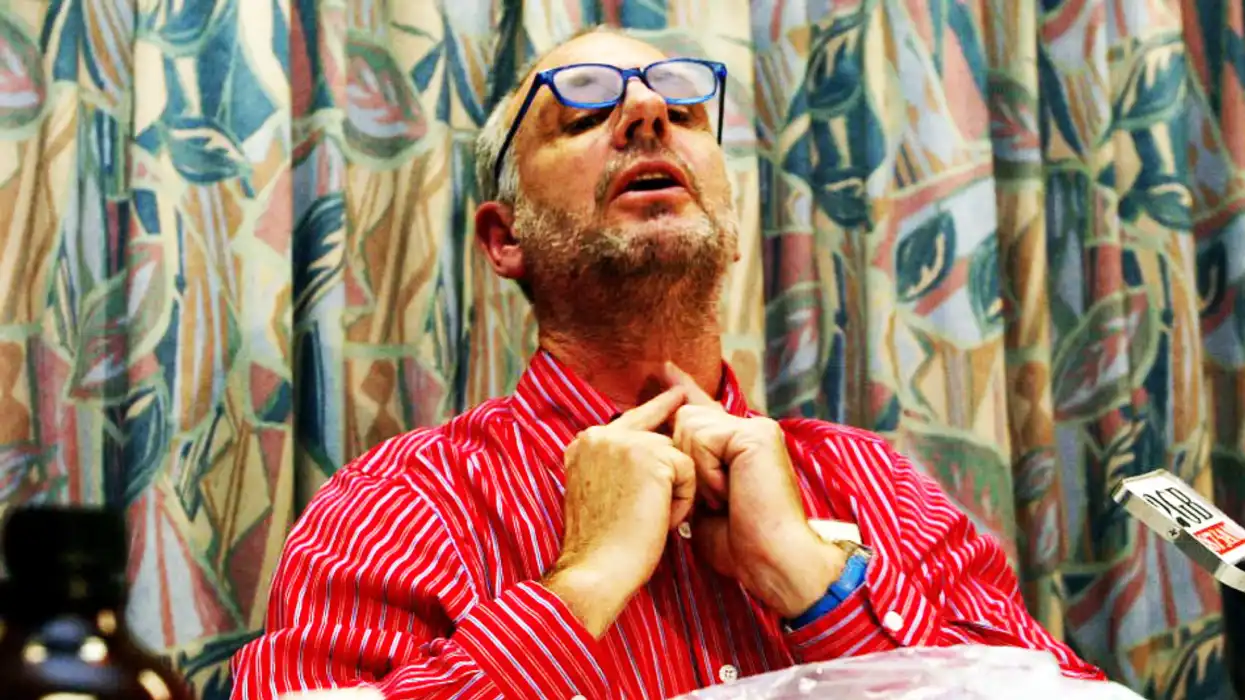
© 2025 Blaze Media LLC. All rights reserved.
“We have nothing that comes close to it in the stockpile anymore, and neither does Russia."
AMARILLO, Texas (The Blaze/AP) — The last of the nation's most powerful nuclear bombs — a weapon 600 times stronger than the bomb dropped on Hiroshima — is being disassembled nearly half a century after it was put into service at the height of the Cold War.
The final components of the 10,000 pound, minivan-sized B53 bomb will be broken down today at the Pantex Plant near Amarillo, the nation's only nuclear weapons assembly and disassembly facility. The completion of the dismantling program is a year ahead of schedule, according to the U.S. Department of Energy's National Nuclear Security Administration, and aligns with President Barack Obama's goal of reducing the number of nuclear weapons.
What does dismantling involve? Explosives -- 300 pounds worth -- are separated form the nuclear material, the pit. The uranium pit will be stored with others from dismantled bombs on an interim basis at the plant, according to Pantex spokesman Greg Cunningham said.
The material and components are then processed, which includes sanitizing, recycling and disposal, according to the National Nuclear Security Administration. According to the NNSA press release announcing the dismantling in 2010, the process follows requirements under the Seamless Safety for the 21st Century (SS-21), which "integrates the weapon system with the facility, tooling, operating procedures and personnel involved in the dismantlement program to form a safe, efficient and effective operating environment."
"The dismantlement of the B53 bomb -- the oldest weapon in America's arsenal and one of the largest in U.S. history -- is a major accomplishment that has made the world safer and for which everyone involved should be proud," said Deputy Secretary of Energy Daniel Poneman. "Safely and securely dismantling surplus weapons is a critical step along the road to achieving President Obama's vision of a world without nuclear weapons."
Wired reports that B53s were designed to burrow and destroy underground facilities, leaving only a "smoldering crater" in its wake:
The B53 wasn’t just any old megabomb. It was the first bunker buster. U.S. nuclear doctrine called for it to be delivered over suspected underground Soviet command-and-control facilities.[...]
“It was one heck of a whopper,” [Director of the Nuclear Information Project at the Federation of the American Scientists Hans] Kristensen says. “We have nothing that comes close to it in the stockpile anymore, and neither does Russia. It’s the end of an era.”
Watch NNSA explain the dismantling effort:
Since it was made using older technology by engineers who have since retired or died, developing a disassembly process took time. Engineers had to develop complex tools and new procedures to ensure safety.
"We knew going in that this was going to be a challenging project, and we put together an outstanding team with all of our partners to develop a way to achieve this objective safely and efficiently," said John Woolery, the plant's general manager.
Many of the B53s were disassembled in the 1980s, but a significant number remained in the U.S. arsenal until they were retired from the stockpile in 1997. Cunningham said he couldn't comment on how many of the bombs have been disassembled at the Texas plant.
The plant will play a large role in similar projects as older weapons are retired from the U.S.'s nuclear arsenal. But, Wired reports that the United States still has 1,500 nuclear weapons.
[H/T Gizmodo]
Want to leave a tip?
We answer to you. Help keep our content free of advertisers and big tech censorship by leaving a tip today.
Want to join the conversation?
Already a subscriber?
more stories
Sign up for the Blaze newsletter
By signing up, you agree to our Privacy Policy and Terms of Use, and agree to receive content that may sometimes include advertisements. You may opt out at any time.
Related Content
© 2025 Blaze Media LLC. All rights reserved.
Get the stories that matter most delivered directly to your inbox.
By signing up, you agree to our Privacy Policy and Terms of Use, and agree to receive content that may sometimes include advertisements. You may opt out at any time.







